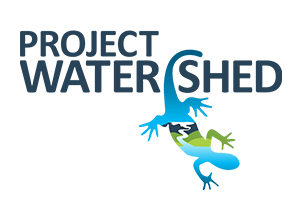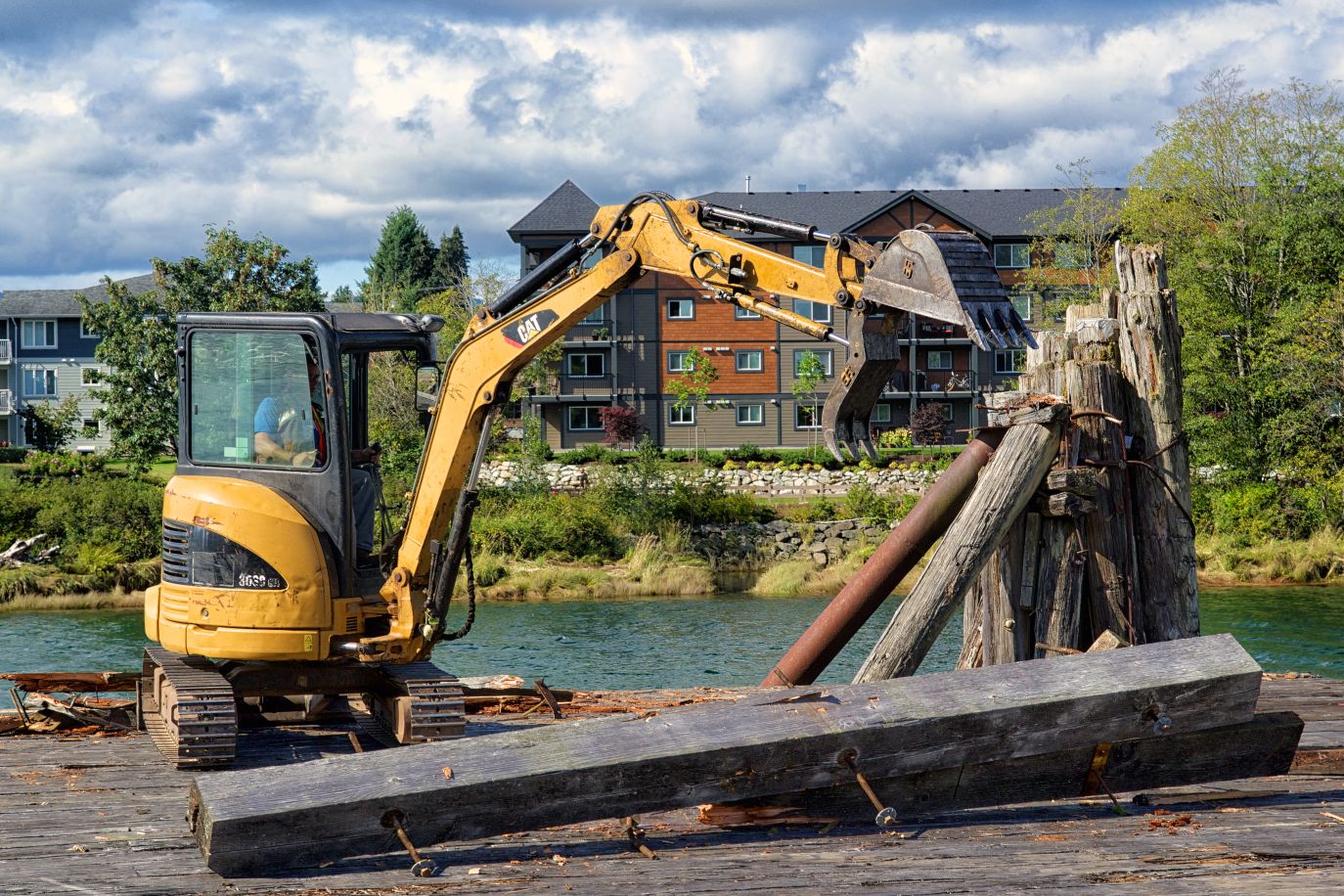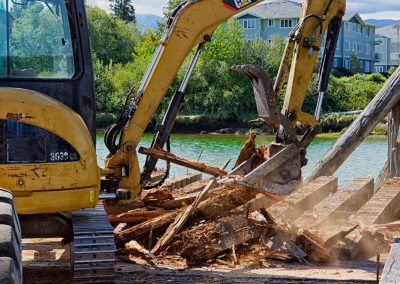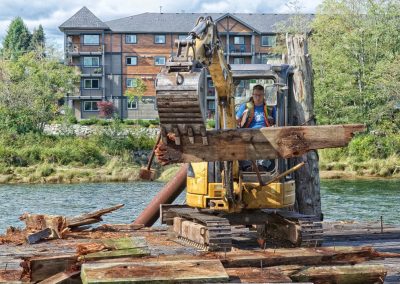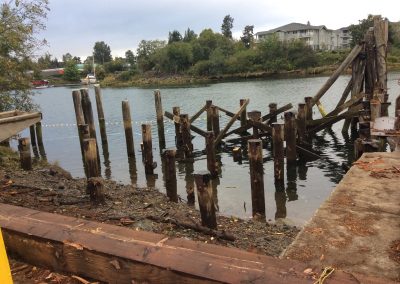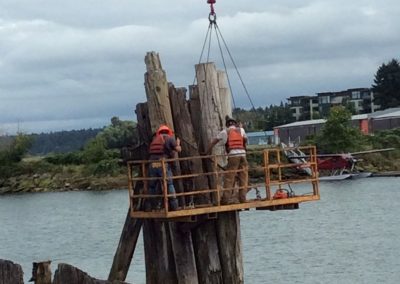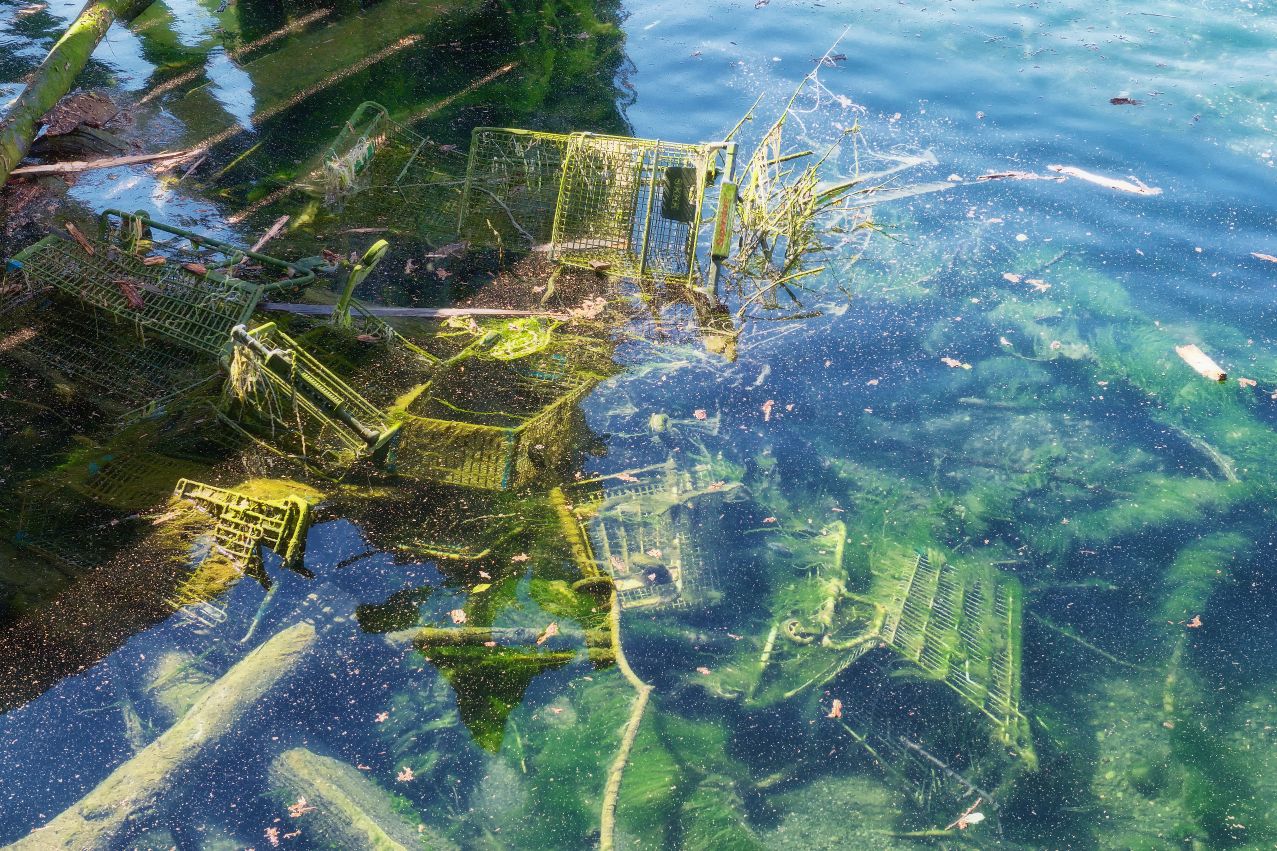Kus-kus-sum Dock, Dolphins and Pilings Gone for Good!
The removal of the dock, dolphins and pilings from the water lot area of the Kus-kus-sum property went smoothly last week. GADD machinery was mobilized to the site Saturday, August 17th and assembled over the weekend. Work commenced on the following Monday and the final pilings were removed during the weekend of the 23rd and 24th. “While we were prepared for many potential incidents (the most serious being a potential oil spill) none were encountered during the project” reported Warren Warttig, Interfor’sProject Manager and RP Biologist. “We would like to thank all of the kayakers and boaters for respecting the water work zone; this made the reclamation project go much more safely and efficiently.”
The surface of the dock was removed first, unfortunately the wood was rotten and unsalvageable. Then the team worked to remove the dolphins. As dolphins are a group of pilings lashed or bolted together the team, suspended by the crane, worked to detach the pilings which the crane then vibrated and pulled out of the sediment. The pilings were up to 6 meters deep. During the process much garbage and trash were removed from the site and the water area. “We were disappointed to have to retrieve 11 grocery carts from the Courtenay River, they clearly do not belong there.” reflected Mr. Warttig.
The team also removed some large woody debris from the Courtenay River, specifically several large root wads and some waterlogged timber. Technical Director, Dan Bowen, noted that these elements will be stored on site and used to help complex the new shoreline area and Hollyhock connection channel during the restoration process. Large woody debris can provide refuge and foraging opportunities for salmon as well as cool water temperatures, slow water flow, and help reduce erosion.
The dock removal process peaked the curiosity of many passers by. “We received an increase in hits to our website and received donations both online and on the roadside adjacent to the site” stated Caila Holbrook, Project Watershed’s Manager of Fundraising, Outreach and Mapping.
With the dock, dolphins and pilings out of the way Interfor can now transfer the water lot leases with the title of the property. While Comox Valley Project Watershed is leading the fundraising and restoration of this initiative, they will not own the property once it is acquired. The City of Courtenay and the K’ómoks First Nation will share ownership and maintenance of the property. The details of this arrangement are currently under negotiation.
“We were very excited to be part (although a small part) of the larger reclamation of the old Field Sawmill site.” stated Mr. Warttig. “ We hope everyone has the opportunity to contribute to this legacy in the heart or our community.”
Related Posts
Fall and Winter Forage Fish Sampling
We’re gearing up for the fall/winter season of forage fish sampling!
Mallard Creek Riparian Planting
We will be planting native riparian species along a section of Mallard Creek that we recently cleared of invasive Reed canarygrass.
Fall Planting at Kus-kus-sum
We are looking for volunteers to assist us with planting native trees, shrubs, and marsh plants at Kus-kus-sum this fall!
A New Day for Forage Fish
Project Watershed and the Coastal Forage Fish Network (CFFN) are celebrating Surf Smet Day on October 25th! This adds another day on which to celebrate and raise awareness about beach spawning forage fish as Pacific sand lance are celebrated on a day in December.
Fall Work at Kus-kus-sum
We are looking for volunteers to assist us with weeding out invasive plants to make room for the native plants arriving later this fall!
Forage Fish Survey Techniques Workshop
The Coastal Forage Fish Network (CFFN) is hosting two one-day workshops to introduce development considerations and methods to survey for beach spawning forage fish for projects that may impact beach spawning forage fish.

